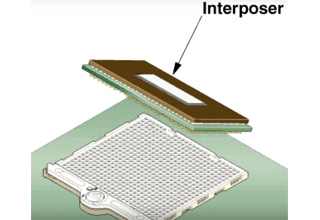With today’s handheld and wearable devices, there is not much room left for connectors, especially in the thickness dimension. Devices in this category include the ubiquitous smartphones, as well as tablets, gaming devices, and wearables—anything that you want to be as small as possible. In devices like these, there are lots of low profile mezzanine […]
Can edge card connectors be exciting?
Most people think of edge card connectors as being the Neanderthals of the connector industry; old, primitive and crude. I disagree with that and will show you that edge card connectors have evolved rapidly and that you will find them in almost every electronic device, even the fastest ones. Edge card connectors are famous for […]
Stamped versus screw machine connector technology
The majority of connector designs use stamped and formed contacts. These are made from reels of flat stock material. Copper alloy producers combine precise amounts of copper, nickel, tin, zinc or other metals in a melt that is then cast into an ingot. The ingot then travels to a rolling mill where it is rolled […]
ZIF socket and connectors: What are the advantages?
In my last post, I wrote about the Bendix—Amphenol Bristle Brush connectors that had mating forces of 1.5 oz per contact. (To compare, most dual beam contact designs have mating forces in the range of 5 oz per contact.) High mating forces can be a problem for many connector designs, including IO connectors that are […]
Bendix connectors keep planes flying with new bristle brush design
Some connector applications put a high priority on very low mating forces. Examples include: Connectors with very high numbers of conductors Insufficient room in a system for injector/ejector hardware Awkward position inside the box that does not permit the operator to apply a lot of force Bendix Connector Corp., now absorbed into the Amphenol Military-Aerospace […]
Would you trust your life to a 50-year old connector design?
As they say in Minnesota: “You Betcha!” In the mid-1950s, a Frenchman, Francois Bonhomme, invented a new connector to address the unique needs of the rail industry. The primary concern was maintaining stable electrical contact during the shock and vibration abuse that is routinely experienced during rail travel. The contact was sold through his company, […]
Breakthrough contact design spawned $500M+ connector company
One of the breakthrough connectors of the 20th century was the Berg PV contact. Some of you will know that Quentin Berg started Berg Electronics back in 1950. When Berg left AMP to start his own company, one of his key inventions and the basis of the company was the mini PV contact. This new […]
Taming the vibration monster with a hair-thin wire!
I am always amazed by the creativity of the human mind when confronted by a challenge. In 1960, clever minds at Tecknit, a manufacture of shielding materials, created a unique solution to connect grounding structures to contain EMI (electromagnetic interference.) They formed a fine, hair-thin wire into a disk that, when compressed, connected ground planes […]
Insulation Displacement: A Breakthrough that Improved your Quality of Life
In the early days of connectors (1940s) wires were generally soldered. Then came crimp contacts that created gas-tight connections between wires and contacts by compressing the wire in a U shaped portion of the contact. Crimping required stripping wire and placing it into a crimp machine one by one. Crimping has proven to be an […]
Modular Jack: A Historical Perspective
The invention of the modular jack and plug by Edwin Charles Hardesty, Charles Krumreiich, et al of Western Electric is, I believe, one of the most important moments in connector history. To set the stage: before 1975 in America, the telephone company owned all of the phones and leased them to customers. The phones were […]










